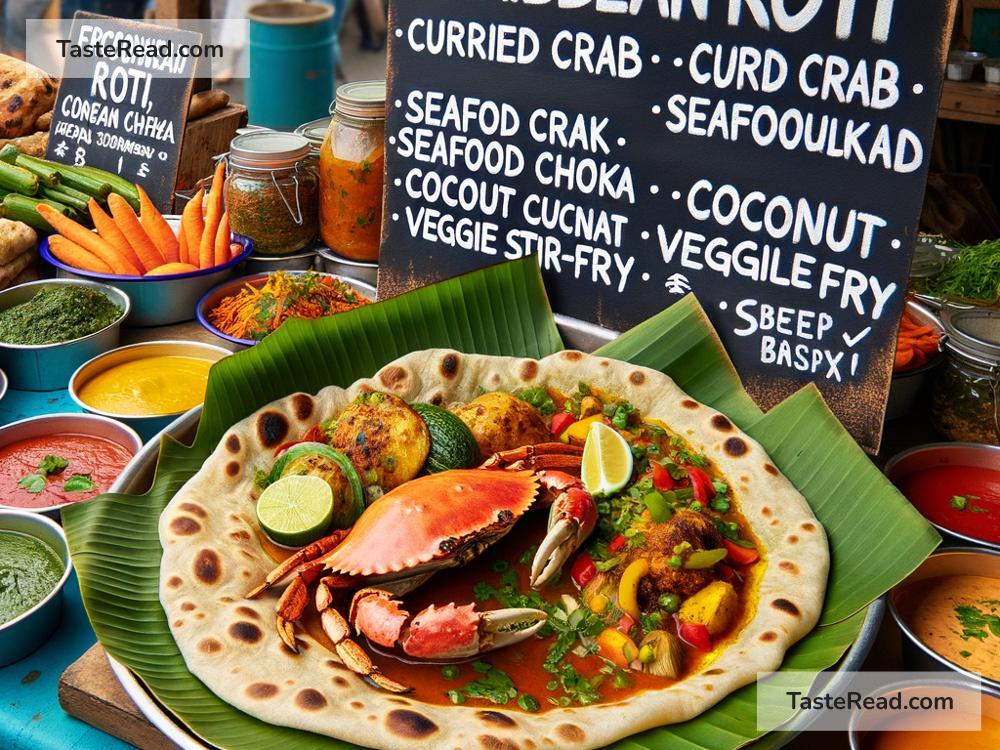Journeying Through Bold Caribbean Roti Innovations in Trinidad, Trinidad and Tobago
If you’re lucky enough to visit Trinidad, the land of vibrant energy, steelpan music, and irresistible food, you’ll quickly find that roti plays an essential role in the country’s culinary identity. Trinidadians have elevated this simple flatbread into a versatile and mouthwatering meal that speaks to their history, creativity, and love for flavorful experiences. Let’s explore the bold roti innovations you’ll encounter on this twin-island paradise in the Caribbean.
What Is Roti?
Roti began as a humble Indian flatbread, introduced to Trinidad and Tobago in the 19th century by indentured laborers from India. They brought their food traditions with them, including roti. Over time, Trinidadians turned roti into more of a food experience than a side dish. Spiced meats, vegetables, and curries are packed inside soft, warm roti wraps, creating a complete and portable meal.
There are different styles of roti, including paratha (flaky and buttery), dhal puri (stuffed with ground split peas), and sada roti (perfect for scooping up curries). Regardless of the style, roti has become an iconic dish in Trinidad, loved by locals and visitors alike.
Trinidad’s Twist on Tradition
In Trinidad, roti is much more than just a flatbread—it’s an art form. Trinidadians have reinvented traditional ways to prepare and serve roti, creating bold innovations that blend Indian, African, and Creole influences. The result is a unique Caribbean fusion that lights up your taste buds.
Let’s break down some of the creative roti innovations found in Trinidad:
1. Roti as a Wrap: The “Bust-Up Shot” Revolution
One of Trinidad’s quirkiest roti innovations is the nickname for paratha roti: “bust-up shot.” This name stems from its flakiness and appearance—when torn, it looks like a crumpled-up shirt (hence “bust-up shot”). Instead of being folded neatly, paratha roti is often served alongside hearty curries like goat, chicken, or chickpeas and potatoes. You use the soft, buttery pieces to scoop up the curry, creating an interactive eating experience.
For busy people or travelers, roti has evolved from being an open plate meal to a portable wrap. Popularly known as the “roti wrap,” dhal puri (ground split pea-stuffed roti) is rolled up and filled with curried meats, seafood, or vegetables. You simply grab it and go—it’s the ultimate street food in Trinidad, combining convenience and irresistible flavors in every bite.
2. Stuffing Outside the Box
Trinidadians are fearless when it comes to experimenting with fillings for their roti wraps. While traditional options like curried chicken, beef, goat, and vegetables remain popular, new and bold ingredients are making roti even more exciting.
Seafood lovers are in for a treat with options like shrimp curry, fish curry, or even chunks of crab meat stuffed inside a roti wrap. Vegetarian fillings have also gone beyond just curried chickpeas and potatoes. You’ll find creative combinations like pumpkin, eggplant (known locally as “baigan”), and spinach paired with flavorful spices.
For the most daring foodies, some Trinidadian chefs have added unexpected twists to roti fillings—think jerk chicken, mango chutney, or spicy barbecue pork. These flavors bring an explosion of taste, blending classic Caribbean influences with inventive ideas.
3. New Formats: Roti Chips & Roti Pizza
Trinidadians aren’t afraid to experiment with the roti itself, turning it into entirely new dishes. For those who love snacks, roti chips are a delightful innovation. Leftover roti is cut into small pieces, baked or fried, and served as crispy chips. Pair them with spicy pepper sauce, hummus, or guacamole, and you’ve got a snack that’s impossible to resist.
Another creative twist is roti pizza, which uses soft roti dough as the base instead of traditional pizza crust. Topped with curried meats, local spices, and tangy sauces, roti pizza is becoming a popular fusion dish that bridges cultures and transforms a beloved staple into something totally new.
4. Sweet Roti Creations
Roti isn’t just for savory dishes. Trinidadians have extended their bold experiments into dessert territory, creating sweet roti options. Paratha or sada roti is stuffed with sweet fillings like coconut sugar, cinnamon, Nutella, or even caramelized fruits. These desert-style rotis are perfect for anyone with a sweet tooth and show that roti’s adaptability knows no bounds.
Where to Find Roti in Trinidad
The best place to eat roti in Trinidad is wherever the locals go. Street vendors, food trucks, and small family-run restaurants are your best bet. Places like “D House of Roti”, Ali’s Roti Shop, and Patraj Roti Shop are favorites among locals for roti wraps and other roti-inspired dishes.
Whether you’re eating on the go or enjoying a sit-down meal, Trinidadian roti brings an unbeatable combination of flavor, tradition, and innovation to your plate.
Why Roti Is More Than Just Food
Roti in Trinidad embodies more than just cooking—it represents a shared history and a blending of cultures. Each roti wrap tells its own story, filled with bold flavors born out of creativity and cultural exchange. From the Indian roots of the flatbread to the Caribbean flavors added over time, roti is a symbol of how food connects us all.
So, when you explore Trinidad, don’t miss the chance to take a bite out of this incredible culinary journey. Whether you go for a classic dhal puri wrap or experimental roti pizza, every bite promises a flavorful adventure—and a deeper appreciation for the bold innovation of Caribbean cuisine.
Bon appétit, or as the locals say, “Come leh we eat!”


